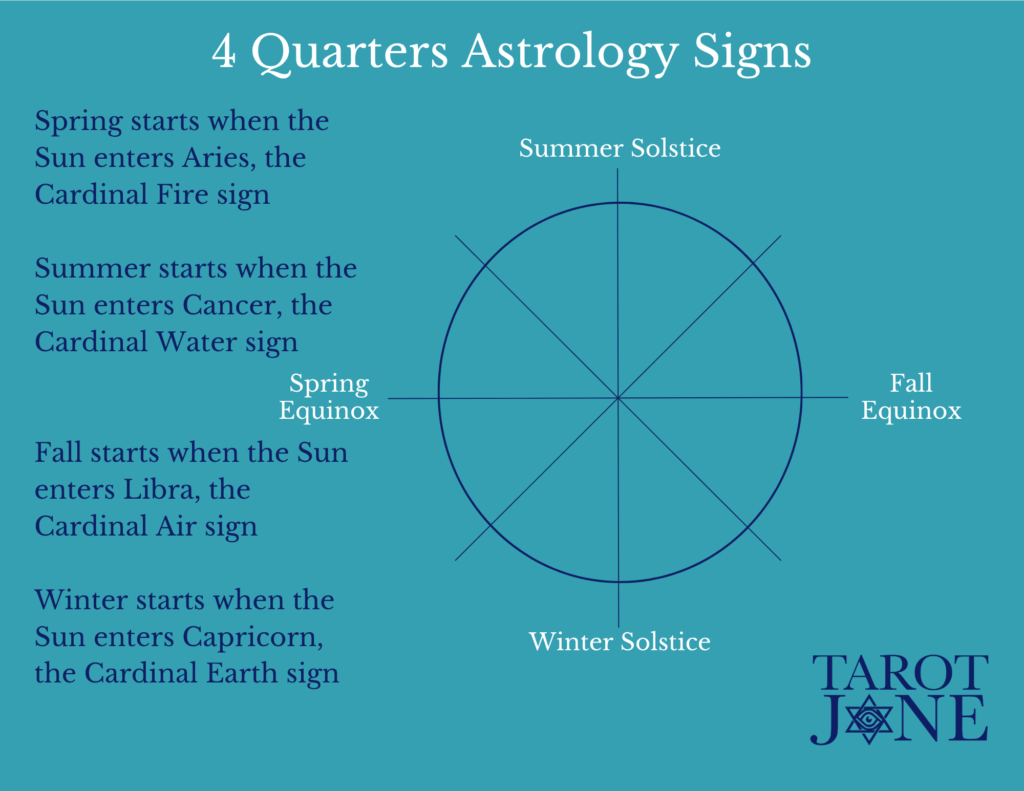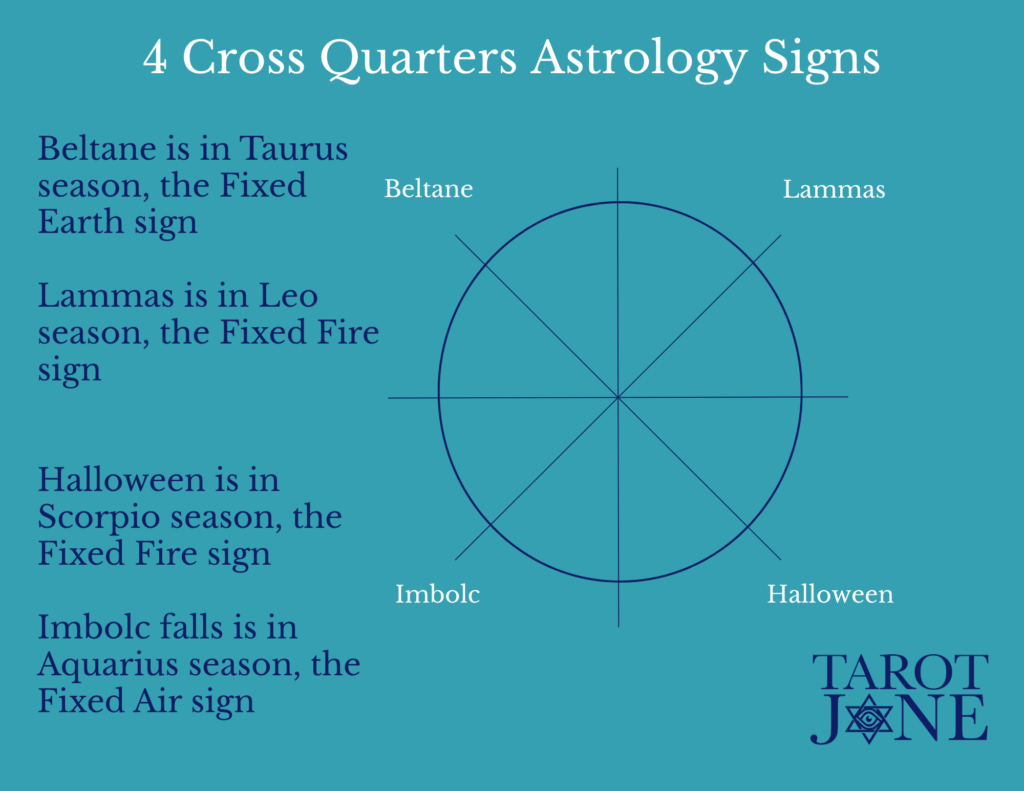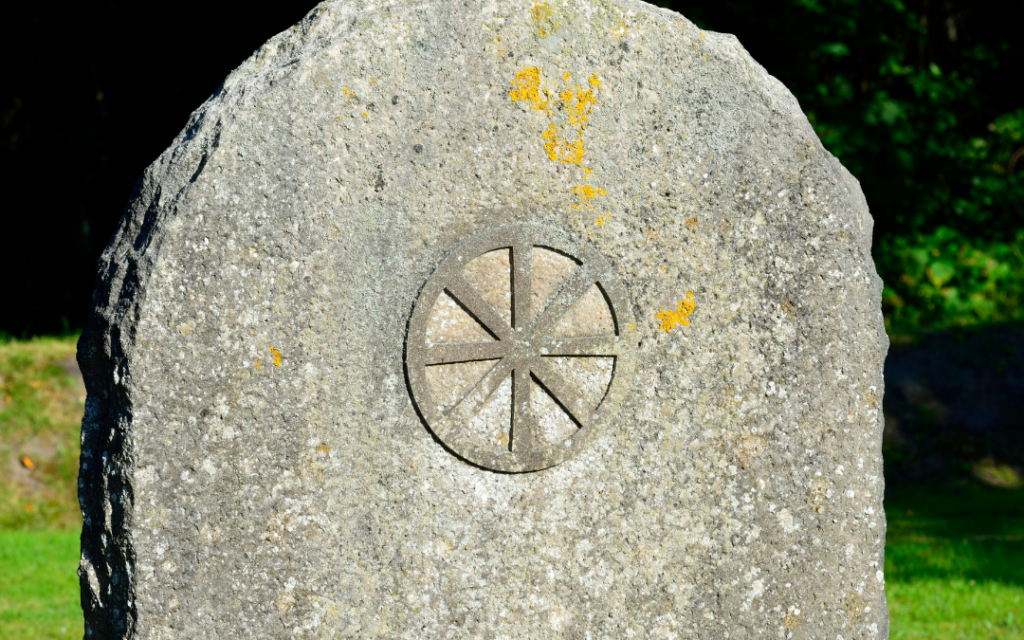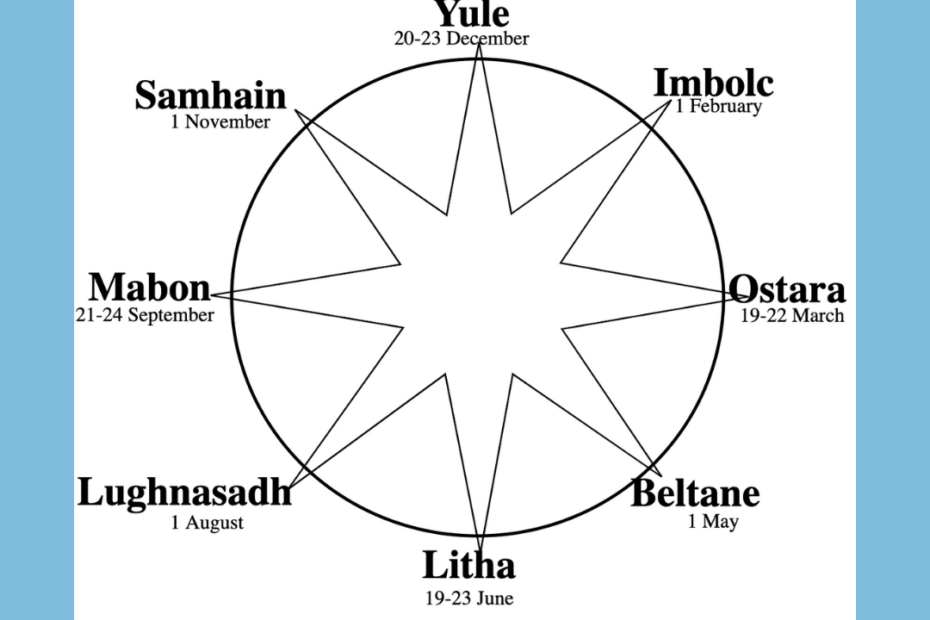Ancient cultures celebrated 8 Solar Holidays over the course of a year. Half of those Solar Holidays are still acknowledged as the beginning of each of the 4 seasons which divide the year into 4 equal parts giving rise to the name Quarter Holidays. The Solstice and Equinox dates vary between the 20th to 23rd of the month because they are based on when the Sun enters each Cardinal Sign.

Not surprisingly, the 4 celebrations that are celebrated halfway between the start of the 4 seasons are called Cross Quarter Days. Cross Quarter Days fall in the midst of the fixed astrology signs and embody the energy of those signs. So, Halloween shares the dark and spooky vibes of Scorpio.

From the Spring Equinox to the Fall Equinox, the days are longer than the nights giving rise to the name, Light Side of the Year. Those holidays are celebrated during the day, like Beltane on May 1st. The other half of the year is called the Dark Side. Those holidays often start the night before like All Hallow’s Eve celebrated after dark on October 31st. Each set of holidays shares some common characteristics.

- The Light Side of the Year
- More day than night
- Easier community activity
- Care for the world
- Stronger Nature Spirits
- Requires growth
- Physical ~ active & practical
- Honor health & living well
- Oak King, leaves bud and fall
- Rituals held during the day
- The Dark Side of the Year
- More night than day
- Easier solitary activity
- Care for self & home
- Stronger Ancestor Spirits
- Requires pruning
- Mental ~meditate & plan
- Honor past lives & Beloved Dead
- Holly King, Evergreen
- Rituals held during the night
The Spring Equinox starts the astrological year as well as the Light Side of the Year and can be grouped with those holidays which puts the Fall Equinox with the Dark Side of the Year. More often I view the Equinoxes as balance points between the two halves of the year and use themes common to the Aries and Libra Full Moons that happen each spring and fall.
The Spring and Fall Equinoxes
- Equal length day & night
- Shifts focus between the two sides of the year
- Balance between extrovert & introvert activities
- Embrace paradox
- Blend opposites like body & mind or practical & spiritual
- Select a theme to guide your growing for Spring Equinox or pruning for Fall Equinox
Now for more details about each of the 8 Solar Holidays
The First Day of Spring, the Vernal Equinox, holds the first point of balance between day and night. Called Ostara by ancient Anglo-Saxon peoples, it gave rise to the name of Easter. Traditionally, Easter is celebrated on the first Sunday after the first full moon after the first day of spring causing it to fall sometimes as late as a month after the first day of spring. Both holidays share images of new life, rabbits and decorated eggs. Astrologically, this marks the shift from sacrificial mutable Pisces to initiating cardinal Aries.
May Day, the Cross Quarter holiday originally called Beltane, honors the fertile land. Crowning a May King and Queen and dancing a May Pole delighted people for centuries. The Christian church turned these celebrations into parades that ended with a crown of flowers placed on statues of the Virgin Mary. In 1889 International Workers Day was officially adopted as a secular holiday celebrated as May Day on the first of May, or the first Monday in May in some countries. Posed as it is halfway around the year from Samhain, it celebrates the life-giving warmth that is the counterpoint to the dark harvest time of Halloween. Astrologically, Taurus with all it’s sensual delight and stability-loving earthy energy shares its influence with these celebrations.
The Summer Solstice, the longest day of the year, is the counterpoint to Yule’s longest night. Called Litha by the Celts, this Midsummer holiday exists in some form in most agrarian cultures. Bonfires light the night although they were dedicated to St John as the Catholic church took over. Astrologically, it honors the shift from chatty mutable Gemini to nurturing cardinal Cancer.
As the days begin to grow shorter, the year ends with three harvest festivals. Lughnasa festivals mark the Cross Quarter Day between the first day of summer and fall. This first harvest festival is celebrated in early August when the berries are ripe and the first grains gathered. Rural areas still weave wheat or corn dolls to bring luck and prosperity. Astrologically, the Sun is strongest while traversing the sign of Leo, lending its kingly energy to these celebrations.
The Autumnal Equinox or first day of Fall is the second harvest festival when most of the crops have been gathered. Astrologically, it acknowledges the shift from precise mutable Viro to objective cardinal Libra which share the Equinox’s focus on balance.
The third harvest festival and the final solar holiday of the year is Halloween when the herds were culled and the last root vegetables were dug up before the ground could freeze. As Pagan celebrations were adopted by the Catholic church into Holy Days, Samhain became supplanted by All Hallows Eve, aka Halloween. With the world wide influence of Christianity, many colonized countries adapted their ancestor festivals to the first days of November. Astrologically, the Sun is in Scorpio, the sign that rules sex, death and magic.
The Winter Solstice, Yule, celebrates the birth of the Sun King and marks the beginning of the days growing longer. On this longest night of the year, gifts were given along with wishes for the coming year. Today we celebrate both Christmas and New Year as part of the transformation of this holiday. The end of travel-loving Sagittarius season and the beginning of traditional Capricorn also happen as part of this shift.
Between the Winter Solstice and Spring Equinox falls the Cross Quarter Holiday of Imbolc. Celebrated at the beginning of February, Imbolc’s early spring celebrations have been popularized as Groundhogs Day with all the folklore around how soon winter will release its frigid grasp. In Ireland the allegiance to the Goddess Brigid led to the adoption of her feast day as that of St Brigid of Kildare. In other Catholic countries, Candlemas or the blessing of candles as part of the Feast of the Presentation closed the Christmas season on February 2nd. Astrologically, the energy of Aquarius that excels at serving the community can be felt underlying these festivals. Even the movie Groundhog’s Day shows the character shifting to helping others.

